Jim Wills led a walk round Burnham Beeches on the morning of Saturday 30 September. The underlying geology of the site is Chalk, which is almost entirely covered by the Sands and Clays of the Lambeth Beds. These are capped in turn over much of the site by Thames Gravels. Members and friends met at the car park near the Eco-café, before setting off in a southerly direction across an open grassy area, where several specimens of a deep blue Pinkgill Entoloma fungus were found. Fungi seen in a strip of woodland included Common Earthball Sclerodoma citrina and Russet Tough-shank Gymnopus dryophilus. The route led though a gate and onto a board walk which crosses an area of mire. The longest section of the board walk is closed for three months in spring and autumn to protect amphibians and reptiles from disturbance, but there was still plenty to be seen from the remaining shorter stretch of board walk. Growing next to it was a large clump of Royal Fern. Plants seen from the board walk and in the area of mire beyond included Cross-leaved Heath, Marsh Pennywort, Gypsywort, Wavy Bittercress, Marsh Thistle and Marsh Bedstraw. Continuing through a drier area of open woodland, a Purplepore Bracket Trichaptum abietinum was found on the trunk of a fallen Pine. Other fungi found here included Bluefoot Bolete Xerocomellus cisalpinus and Blushing Bracket Daedaleopsis confragosa. After crossing Sir Henry Peek’s Drive, the walk continued across another area of wet heathland. A small group of Orange Bolete Leccinum aurantiacum was growing at the base of a thicket of birch, willow and Aspen. Plants seen included Lesser Skullcap, Bog Pimpernel and Marsh St John’s-wort. Several of the latter plants still had a few yellow flowers. Nearby, a pale topped bolete had amber-coloured drops of liquid on its cap. It was suggested that this might be caused by the mould Hypomyces chrysospermus attacking the fungus. The walk continued through an area of dry heath where Juniper was thriving. A Speckled Bush Cricket was seen and a rotting birch log was home to a Hornets’ nest. Four Ring-necked Parakeets flew calling overhead. Further sightings in a wooded area included a purple-capped Brittlegill Russula, a yellow slime-mould Fuligo septica and a Wood Ant nest.
The path led to the Upper Pond, home to a small flock of Mallard and a Moorhen. White Water-lilies covered much of the pond, with a Grey Wagtail running across their leaves. After crossing the dam at the lower end of the pond, the route turned left to follow the stream down the valley towards the Middle Pond. Lumpy Bracket Trametes gibbosa, with green algae growing on its upper side, was found on Beech. Fairy Inkcaps Coprinellus disseminatus were growing in cracks in the trunk of an old, hollow Beech pollard. Oak Mazegill Daedalea quercina was found on a fallen branch by the stream and a small Beefsteak Fungus Fistulina hepatica was growing on a tree on the other side of the path. Middle Pond was very overgrown, particularly with Bulrush. Holes in the bank above the edge of the pond were home to a number of solitary bees. Common Cow-wheat with a few yellow flowers was growing at the foot of the bank and nearby, Dwarf Gorse was in flower. Continuing through the wood, Saffron-drop Bonnet Mycena crocata was growing on woody debris next to a fallen Beech branch and Porcelain Fungus Mucidula mucida was found on the trunk of a Beech tree. A Speckled Wood butterfly was on the wing. The path led through woodland to the 800-year old Druid Oak, a magnificent oak pollard. The route then crossed Lord Mayor’s Drive to Sevenways Plain. Next stop was to admire the Cage Pollard, an ancient hollow Beech. This section of woodland is grazed by cattle. The walk continued through more woodland to Mendelssohns Slope, with the wooded hillside dropping away steeply down to the left. Fungi found here included Yellowing Curtain Crust Stereum subtomentosum, Beech Jellydisc Neobulgaria pura and a Stinkhorn Phallus impudicus with attendant flies and a large orange slug. Hard Fern was also noted. The next section of woodland along Burnham Walk was on Loess soils, wind-blown deposits from ice age times, which are not as acid as elsewhere. Plants here included Common Figwort, Wood Speedwell and Wood Spurge. The right hand side of the path was fenced off, guarding a very steep drop down to a series of sink holes. The next path turned to the right, crossed a stream and climbed past a wood pile where the group had the great good fortune to meet photographer and slime-mould expert Barry Webb. Barry had his camera focused on a specimen of the Stemonitis family of slime moulds. It had delicate bundles of pink tube-like structures supported by thin dark stalks. He also confirmed the identification of some of the earlier slime mould specimens.
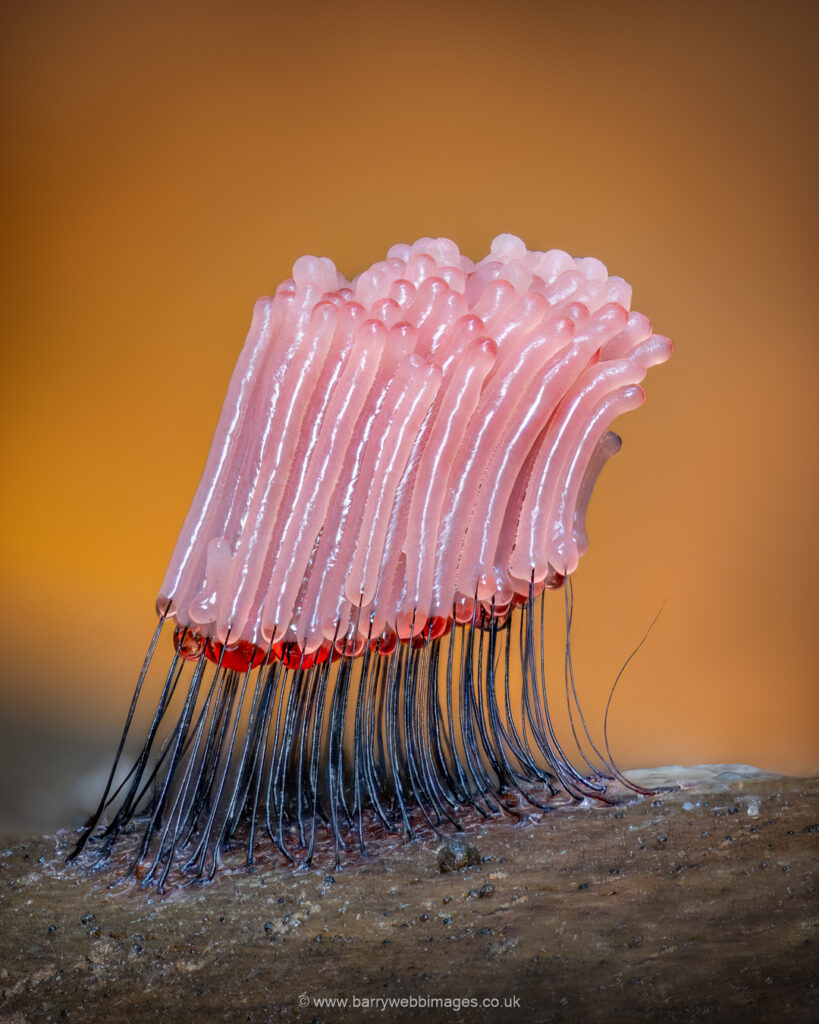
Slime mould of the Stemonitis family, copyright Barry Web
In the final section of woodland, a Hoof Fungus Fomes fomentarius was found on Birch. It was then a short walk back to the café for sandwiches and ice creams.
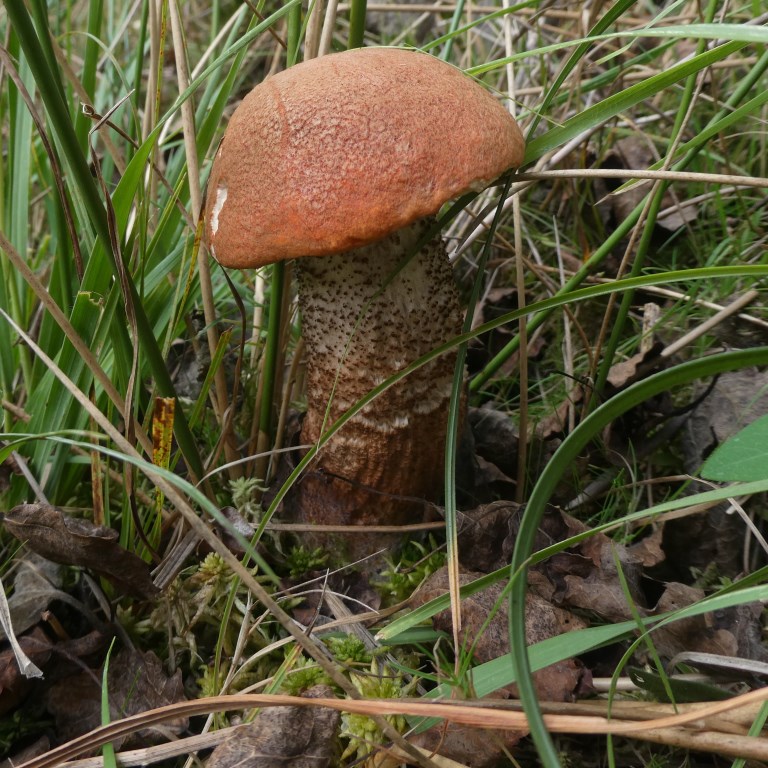
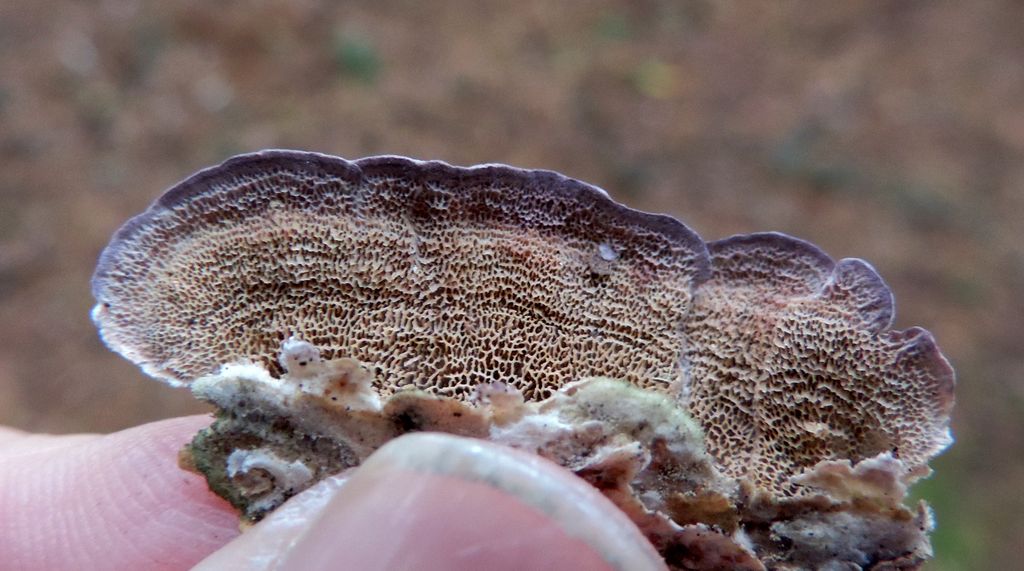
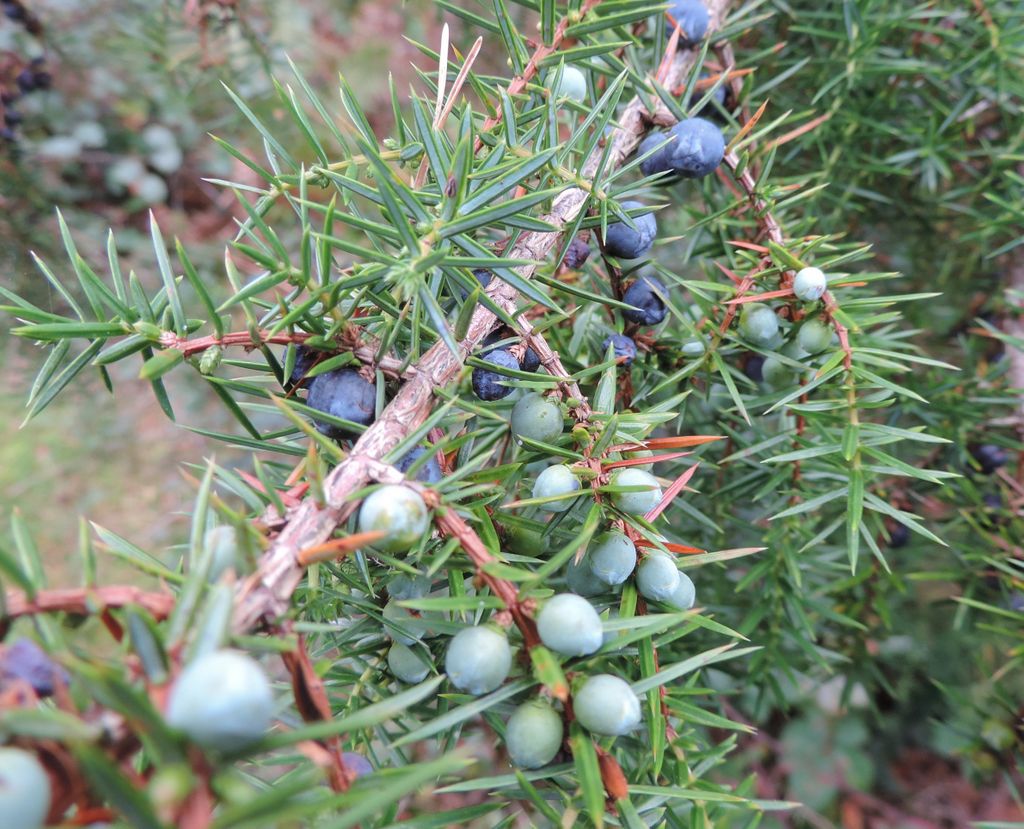
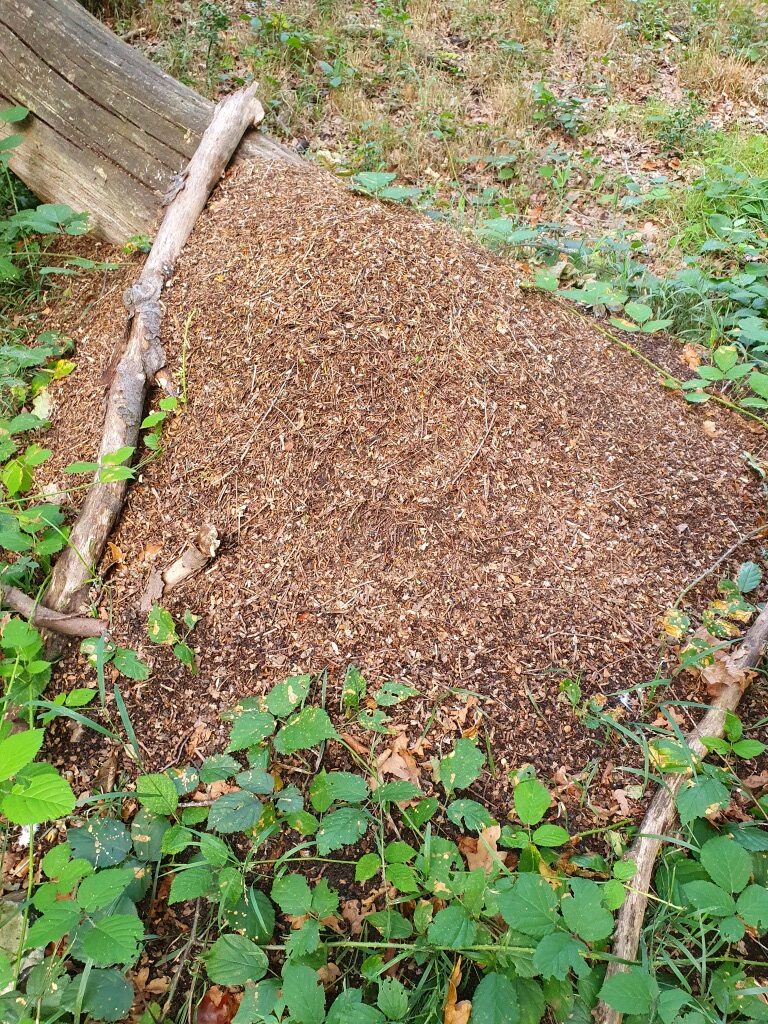
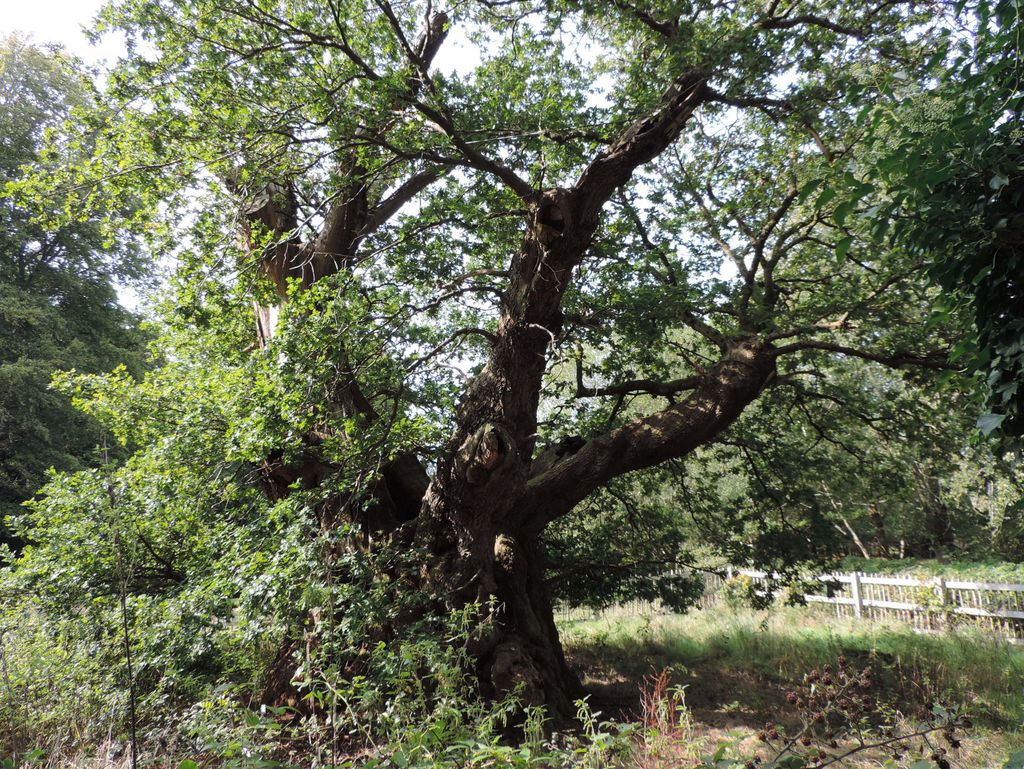
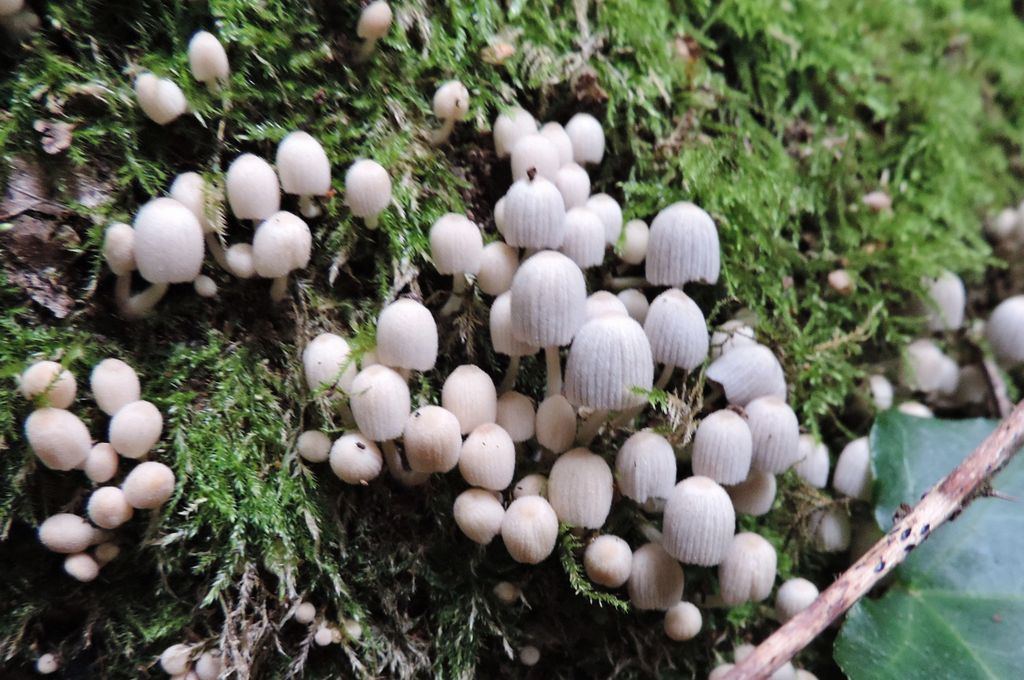
Pictures by Rob Stallard and Jim Wills
